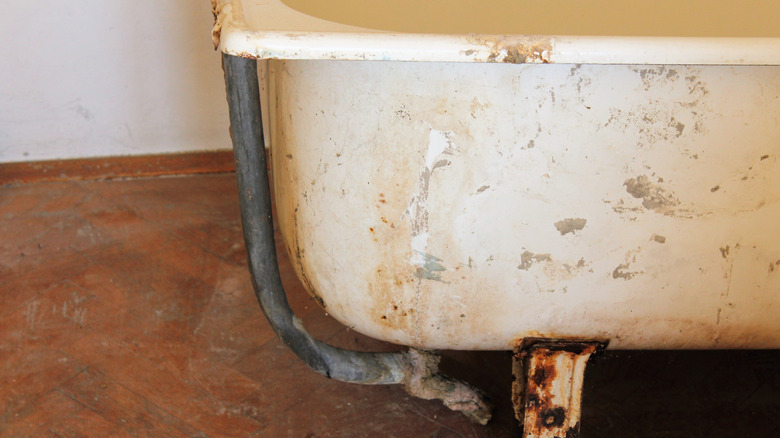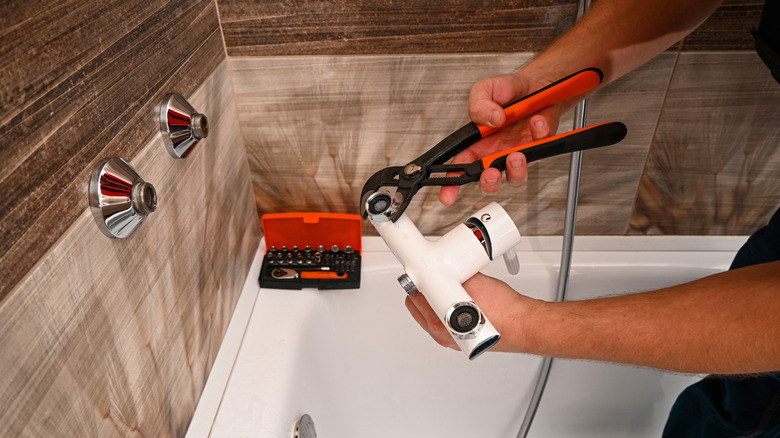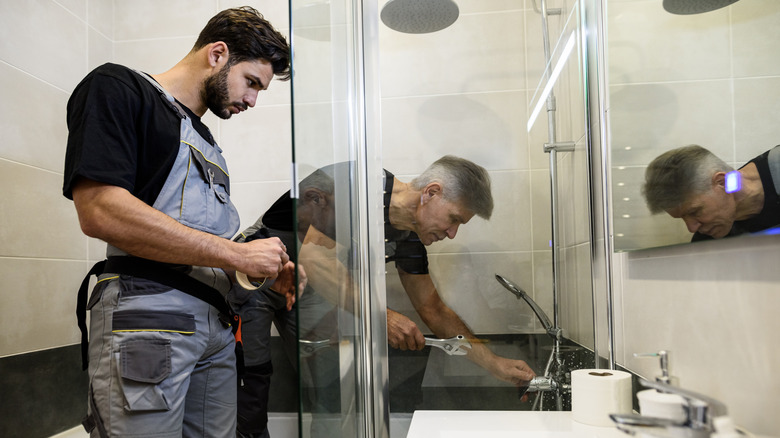What It Means If You See Your Bathtub Beginning To Sink (And What To Do Next)
Have you started noticing some concerning issues in and around your bathtub? Maybe there's a creaking sound when you step in it, a slight movement in the structure you didn't notice before, or water isn't draining quite right and is pooling in certain areas of the container. You might even start experiencing more alarming signs of problems, like squishy soft spots on the floor or the tub itself pulling away from the wall. If any of this sounds familiar, there's a good chance your bathtub is sinking.
A sinking tub isn't just an inconvenience or an aesthetic issue — it's actually a sign of a big problem beneath the surface. But what causes a tub to sink? Most often, there are structural issues caused by plumbing leaks that have rotted the subfloor and even the framing that supports the container. Another culprit may be improper tub leveling or reinforcement during installation. Either way, a sinking bathtub situation shouldn't be ignored for long. In fact, it should be addressed immediately before the damage gets worse.
Damage to underlying pipes can cause a bathtub to sink
If your bathtub is slowly dipping lower, leaks in your tub's plumbing may be to blame. If you're unsure whether this is the root issue, look for other signs of water damage. Some other clues that you have a leak include damaged tiles or vinyl around the base of the tub, excessive mold growth around the base, or spongy-feeling floors. These spills may be the result of damage to the container itself, a leaking faucet, old grout, a drain leak, or damaged underlying pipes. When water leaks underneath your tub, the moisture rots its wood framing supports and subflooring, causing the whole structure to sag.
To fix this issue, you have to first address the water leak. Any of the problems above are signs you need to call a plumber since the issue might be in the underlying pipes. A professional can inspect the area and repair the leak for you, as well as remove the tub so the flooring underneath is accessible. Once the leak is sealed, the rotted portions of subflooring and support beams need to be replaced or reinforced. A carpenter or a general contractor can help with this part, and your plumber can reinstall the tub once the foundation underneath is up to par.
Improper installation can also sink your tub
There's a chance your sinking tub isn't the result of water damage. Sometimes, oversights or cut corners during the original installation are to blame. A bathtub must have a solid, level base with enough structural support to bear the weight of the container and the water that fills it. If the original installers didn't station an adequate mortar bed beneath the tub, the whole structure could eventually start to sink. Likewise, if proper leveling techniques aren't used when installing — like filling the tub with water before leveling, tiling, and caulking around it — caulking can soon stretch or break. This can lead to a sinking tub and leave the perimeter vulnerable to water damage.
To correct this type of installation problem, your tub will need to be removed and reinstalled. A licensed professional plumber is your best option for this type of fix since they understand how to properly disconnect and reconnect the tub. This process may involve installing a new mortar bed or reinforcing existing structural elements with the help of a carpenter. Only then can the tub be reinstalled and reconnected. While this whole process to fix your sinking tub may feel like overkill, the cost of installing a bathtub properly — and ensuring it's sealed and free of leaks — can save you from big damages later on.


